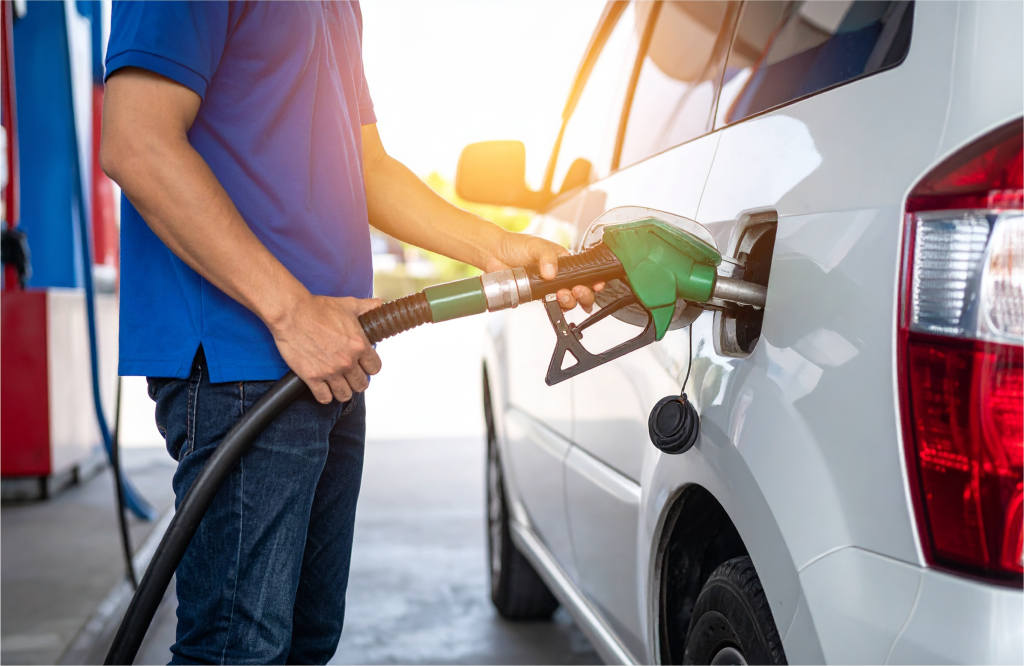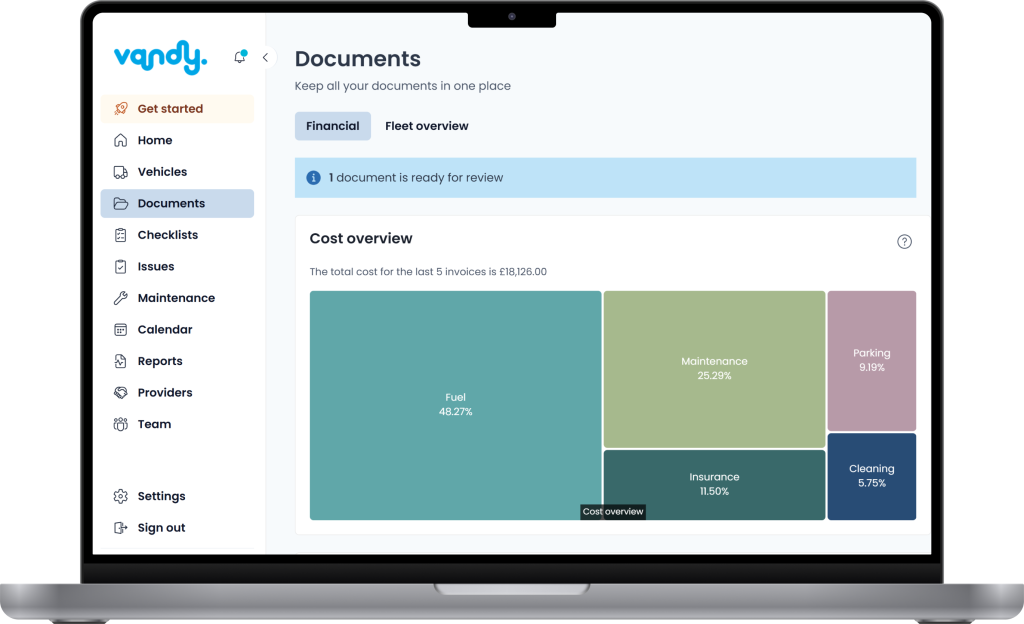How to calculate fuel consumption and reduce fleet fuel costs

Fuel is one of the biggest costs in running a fleet — and it’s unavoidable. But while you can’t eliminate it, you can take control of how it’s used. Whether you run a few service vans or a larger fleet, tracking fuel consumption gives you a clear picture of how your vehicles are performing, helps spot inefficiencies, and even highlights potential misuse or theft — all of which protects your bottom line.
In this guide, you’ll learn:
- What fuel consumption is and how it’s measured
- How to calculate fuel consumption manually, step by step
- The drawbacks of tracking fuel the old-fashioned way
- How Vandy automates fuel tracking for your fleet
- Why accurate fuel data is essential for long-term savings
What is fuel consumption and how is it measured?
Fuel consumption tells you how much fuel a vehicle uses to travel a certain distance. In Europe, it’s usually shown in liters per 100 kilometers (l/100km), while in the UK or US, you’ll often see miles per gallon (MPG).
Several factors can affect fuel consumption:
- Vehicle condition: tyre pressure, air filters, and engine health
- Road type: city streets vs. highways
- Load weight: heavier vehicles burn more fuel
- Weather: extreme temperatures can increase consumption
- Driving patterns: frequent stops and starts
- Driver behavior: aggressive acceleration or speeding
Keeping these variables in mind helps you understand your fleet’s fuel use in context and identify opportunities to save.
How to calculate fuel consumption manually
Calculating your fleet’s fuel use is easier than you might expect. All you need is a notebook, a calculator, and a few minutes.
Tip: If you want to skip the old-fashioned method, scroll down to see how Vandy automates fuel tracking for your fleet. Here’s how to do it manually:
Step 1: Record your odometer reading before refueling
Example: 45,000 km
Step 2: Fill the tank completely and note how many liters you added
Example: 40 liters
Step 3: Drive as usual. At your next fill-up, top off the tank and record the new odometer reading
Example: 45,500 km
Step 4: Calculate the distance traveled
45,500 km – 45,000 km = 500 km
Step 5: Use the formula to calculate fuel consumption
(liters used ÷ kilometers driven) × 100 = fuel consumption in l/100km
(40 ÷ 500) × 100 = 8.0 l/100km
Want to check how much fuel you’ll use on a specific route — like Calais to Dover? Follow the same process: record distance, track fuel use, and apply the formula.
How to calculate fuel costs
Knowing the price of fuel and how much your vehicles consume lets you estimate costs per trip or per month. This is a simple but useful step when you’re reviewing fuel expenses or planning your fleet budget.
Price per liter × number of liters = total cost
Example: 1.60 € × 40 liters = 64 €
The downsides of manual fuel tracking
Imagine you run a fleet of ten vans. At the end of the month, each driver hands over a pile of fuel receipts. You spend several evenings entering the data into a spreadsheet and calculating fuel consumption by hand – time you could have spent more productively.
Tracking fuel manually may work, but it has clear limitations:
- It’s time-consuming
- It’s prone to errors
- It’s difficult to spot trends or inefficiencies over time
For growing fleets, relying on paper and spreadsheets simply isn’t sustainable. Fleet management software makes fuel tracking faster, simpler, and far more accurate.
Vandy: Simple fuel monitoring for your fleet
Vandy is a fleet management solution that helps you track fuel consumption, cut unnecessary spending, and prevent misuse. Forget spreadsheets and chasing drivers for fuel receipts, Vandy automates fuel management, so you have the numbers you need at hand. Here’s how it works:

Collect fuel receipts digitally
Say goodbye to lost paper receipts and manual logging. With Vandy, drivers can take a photo and upload fuel receipts on the go, keeping your records complete and up to date.
AI-powered receipt reading
Vandy’s AI reads receipts and invoices for you, extracting date, price, volume, and vehicle, so you don’t have to type in the details manually.
All fleet costs in one place
Fuel, maintenance, insurance, and more. Vandy keeps all fleet expenses in one place, linked to each vehicle, so you can calculate the total cost of ownership (TCO) and understand how fuel contributes to it.
→ Learn how to calculate the Total Cost of Ownership for your fleet
Automatic mileage logging
No more manual odometer checks. Mileage updates automatically through telematics, giving you accurate data to monitor vehicle usage and calculate fuel consumption.
Digital logbook
Every trip is recorded automatically, showing when, where, and by whom vehicles are used. This helps spot fuel inefficiencies and prevents unauthorised use.
Reporting and cost analysis
Curious how much your fleet spent on fuel last month, or which vehicles are using the most? Vandy gives you clear insights and lets you export the data to Excel for further analysis and easy reporting.
Summary: Take control of your fleet’s fuel costs
Running a fleet without tracking fuel is like driving blind. Whether you calculate fuel consumption manually or use Vandy to automate the process, accurate fuel data puts you back in the driver’s seat — helping you spot inefficiencies, prevent misuse, and reduce waste, all while protecting your bottom line. By tracking fuel more accurately and addressing inefficiencies, fleets can significantly reduce fuel costs over time.
Try Vandy today
FAQs
Reviewing fuel data monthly is a good starting point. Regular checks help spot overspending, identify inefficiencies, and plan your budget more accurately. Use software tools to automatically calculate fuel consumption and costs for more accurate insights and to save time.
Fuel consumption can be influenced by vehicle condition (tyres, filters, engine health), route type (city vs. highway), load weight, weather, and other factors.
Yes. Vandy links fuel costs and mileage to individual vehicles, giving you a clear overview of spending across your fleet.
Absolutely. Drivers can upload fuel receipts, and managers can access reports and insights from their mobile devices.